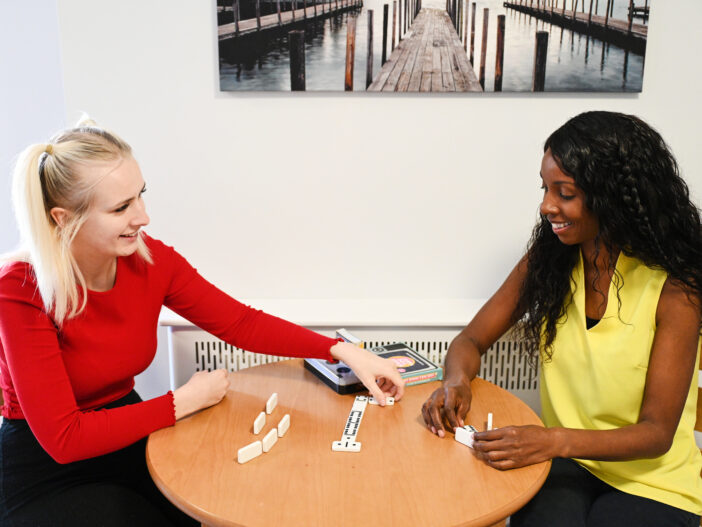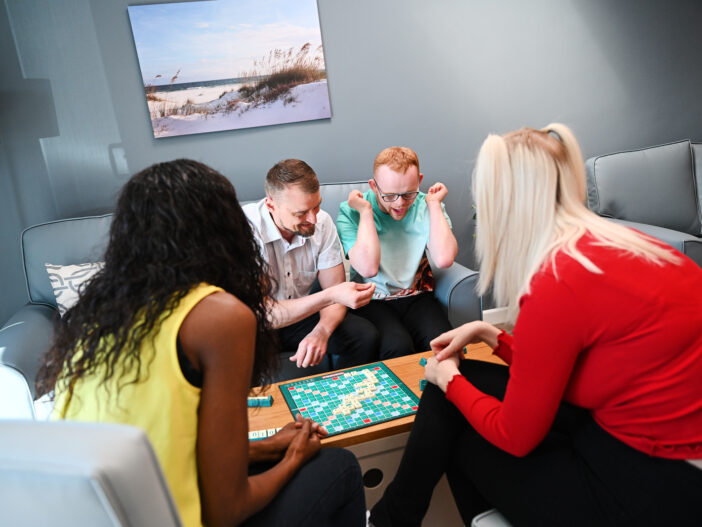Supporting autistic people during the COVID-19 pandemic
During the COVID-19 outbreak, millions of us are practicing social distancing and self-isolation. This is a huge change to our daily lives.
This change is difficult for everyone but for autistic people in our community, it can be even more challenging. Under normal circumstances, we support and encourage the autistic people we support to go out in the community and socially interact but with the new government advice, that isn’t possible.
We know that routine is important to most autistic people and changes in routine can be very difficult for them to understand. Other behaviours and anxiety develop due to the unforeseen situation. So how can we help them?
Shaji Rajamony, our in-house autism expert shares some tips.
Predictability
As autistic people like routine, they struggle with unpredictable situations – like the current crisis. Routines often serve an important function – they introduce order, structure and predictability and help to manage anxiety.
- Be mindful that people may experience unusual fear or anxiety.
- Reassure them more frequently than normal.
- Refocus to another activity.
- Tell them what is happening tomorrow before they go to sleep.
Read more about predictability and coping.
Communication
Communication is often referenced as something autistic people particularly struggle with. Finding the right method can take time but is so worthwhile.
- Use a range of communication styles to help them understand what COVID-19 is so they become familiar with it. They may need you to explain this regularly.
- Try explaining COVID-19 in the morning. This gives you time throughout the day to observe any anxiety build up and manage behaviours. It also gives them plenty of time to process the information and so should help reduce sleepless nights.
- Try to stay positive and avoid speaking about any fears they may have about the virus while an autistic person is around.
Explain that when public transport is running, it is only for key workers like their support workers, nurses and doctors.
Visual aids
Visual aids can be useful for autistic people to both process information and communicate how they are feeling. Examples include:
- Posters on the front doors saying “no exit”.
- Visuals of police checking cars, and chatting to people with masks on.
- Visuals of empty public transport, closed shops and empty parks to explain why people are not going out.
Easy read information
Some people may find easy read resources easier to engage with. We’ve created some specifically addressing what COVID-19 (coronavirus) is, and how they can stay safe by doing simple things like washing their hands often and staying indoors.
- Use easy read information that has been produced to inform them.
Make charts or scrap sheets as an activity to engage them. This enables you to repeat information and for them to process and understand more about the situation.
Consistency
This is as important as routine for autistic people. Inconsistency can confuse and frustrate them.
- Remember what you have done or said and be consistent.
- Ensure all people in the household – fellow
residents or support workers – are working from the same information so they
too can be consistent. Autistic people can ask the same question to different people,
even though they know the answer. If one person gives a different answer, it
might cause behaviours.
If you are unsure, you could ask them (depending on their support strategy) “Have you asked the question to (staff member) and what did they say to you?”
Delayed processing
Some autistic people have delayed processing and they might ask about things that have happened in the past.
- Ensure any staff change overs include a detailed update about each autistic person, including how they have been and any behaviours.
Also remember to include information about missed visits by families, missed appointments, cancelled holidays and similar.
Set limits
Setting limits around repetitive behaviour, routines and obsessions is an important and often essential way to minimize their impact on the autistic person’s routine.
It is not about taking control, but making sure limits are set when any actions require some safe stable and meaningful intervention.
- Be clear, concise and consistent when setting limits.
Earlier interventions
Unexpected things can happen, such as disruption to staffing levels or regular rota patterns. Identifying behaviours early on can allow you to put interventions in place before things escalate.
This allows you to apply interventions earlier and then refocus.
- Monitor and understand changes that may indicate an escalation of behaviours.
- Define what interventions you could use to calm and refocus.
- Have a plan for should incidents happen. For example, redirecting others away to give the person the space and time they need.
Sensory overload
As people are not allowed out unless necessary, home may be busier and louder than usual. This can lead to sensory overload and possibly cause anxious behaviours. Equal importance needs to be provided to manage:
- People who are not going out as usual, who have anxiety.
- People who usually stay home and are anxious due to stimulation overload and confusion.
- Consider a range of activities to keep people busy and active.
- Have a designated quiet space.

 Information
Information 

